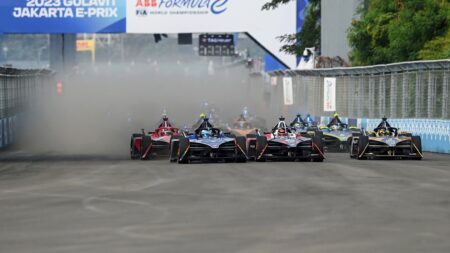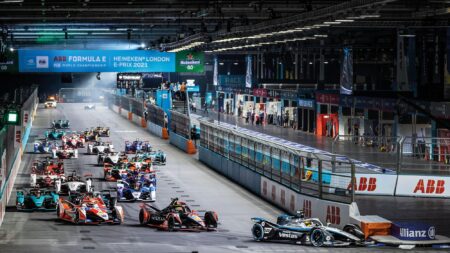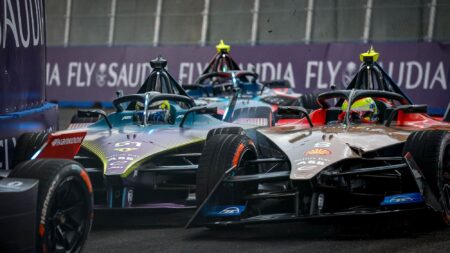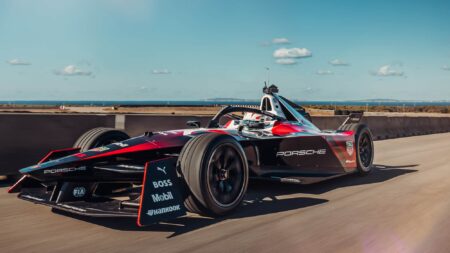
Formula E's stepped up its game as it switches to pay TV
As Formula E enters its tenth season, it's still seen with scepticism by racing fans. But as coverage switches to pay TV, it is now worth watching, says Damien Smith
Darren Cox on a week that’s changed the face of racing as we currently know it
The last eight days have seen a shift that not even the most informed and insightful observers of our sport could have imagined. Porsche and Mercedes entering Formula E – both dropping one of their seemingly critical motor sport programmes to do so – and the FIA legislating that the halo must be used in Formula 1 from 2018 onwards.
The dominos have just begun falling. The law of unintended consequences is strong in motor sport and I can already see many, many fallouts from this week’s news.
Certainly the DTM and the World Endurance Championship are dead in the water – I don’t believe that is even a debate. Formula E, meanwhile, will ride the crest of a manufacturer wave for at least the next three years. And surely all single-seater series under FIA governance will soon be required to have a halo-like device, such is the impact of the ‘we know it makes F1 safer so we couldn’t ignore it’ undercurrent of the decision.
So this could be seen as the beginning of the end of motor sport as we know it. Various bodies and companies will make decisions based on this week’s news for years to come.
I doubt many new car manufacturers will be able to sign-off a non-electric motor sport programme without having a very good reason not to do FE. Therefore, WEC is dead. It was built on an outdated model – the F1 business model from the 1990s – when it should have looked elsewhere for inspiration. It needed many things, such as a shorter format race offering in a similar vein to what cricket has with T20, it needed to actually be fan friendly and have free access to its content for fans and the brands involved so it could build the audience. Instead it is trying to build the revenue through a small audience. In the space of a week even those tweaks have been rendered useless.
The ACO has to quickly switch from saving the WEC to saving top-line endurance racing full stop. The 24 Hours of Le Mans will continue until the last drop of oil is available to be turned into a combustible liquid. The rest of the infrastructure? It needs saving.
But don’t think that it will be plain sailing for Formula E. The dream of a grid full of manufacturers will soon turn into a nightmare when they each realises that there is almost zero TV audience, next to zero paying fans at the races, a small and ill-equipped and underfunded team, and they all can’t win. Those manufacturers who came to Formula E on the basis of strong return on small budgets have realised that the former was a façade and the latter is about to change as four big-spending German companies go toe to toe with a completely different expectation of what a ‘small’ budget is. The likes of Jaguar just will not be able to justify the electric arms race that is just about to be unleashed.
Both the ACO and Formula E will need to rapidly go through a huge transformation process to take account of their new reality. Who is more ready? The next nine months will start to tell us. The ACO has a huge amount of positives to build on if it does not focus all its efforts on saving the WEC. LMP3 is a huge hit and in GTE it has all the key GT manufacturers. A shift from dictating to its competitors to listening to them could see it emerge from this period with a different but more sustainable model.
In the meantime there are some big winners who might just have seen all this coming. For a start, Alessandro Agag must be congratulated for his foresight and bloody mindedness to launch and stick with Formula E.
Others will emerge as the picture becomes clearer. Certainly Ginetta with their well-advanced LMP1 privateer programme look to be perfectly positioned, and as usual Stephane Ratel of GT3 fame is sitting pretty as his vision of pseudo-factory and customer-funded series continue to grow exponentially across the globe. The DPi direction of IMSA suddenly also looks like the right move at the right time. Low budget, low tech manufacturer-led programmes with low barriers to entry will be the only way to justify a non-Formula E project in the future.
And what of Formula 1? Unless F1 wants to merge into a Formula E-type proposition in the next phase of technical rules, it needs to zag when Formula E zigs. And that means loud, fast, equal machinery with the best drivers racing on the best circuits in the world. Entertainment rather than tech. Let Formula E have the headaches of manufacturer infighting and let F1 go out with a bang.
Go out? Yup. This week really might mark the beginning of the end.
So if you still have time, get down to the Silverstone Classic this weekend as ‘proper’ old school motor racing starts its lap of honour.

As Formula E enters its tenth season, it's still seen with scepticism by racing fans. But as coverage switches to pay TV, it is now worth watching, says Damien Smith

14 races. Three continents. Seven months in the making. It all comes down to one thrilling finale. Season nine of the Formula E world championship is officially coming to a…

Formula E is leading the way out of FIA world championships for the best racing action this season – but will fans pay attention?

Porsche is looking to challenge for the Formula E championship with its new 99X Gen3 car but, along with other teams, has suffered problems with spec parts on the new machine, with just over two months until the start of the new season